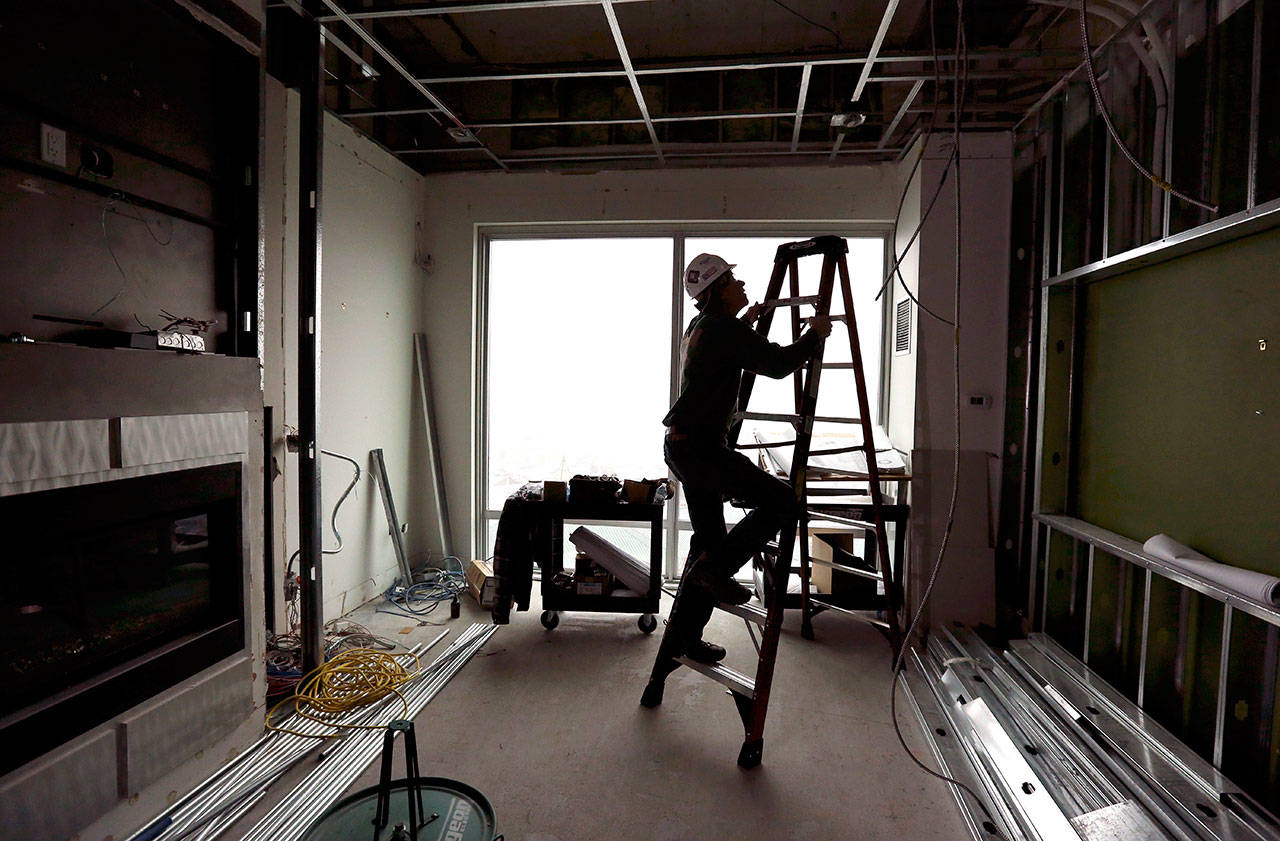By The Herald Editorial Board
During a weekend in which some of us will raise a hot dog and a beer to celebrate our personal and collective labors, we also need to give some thought to the workforce of the future.
With an improved economy in Snohomish County, the Puget Sound region and throughout the state has come the welcome promise of jobs. On top of relatively low unemployment numbers regionally, some 740,000 job openings are expected in the state during the next five years.
The problem that we’ve pointed to before is a lack of high school graduates with the training and skills necessary to step into those jobs. Of that nearly three-quarters of a million jobs, 70 percent require applicants with post-secondary credentials, from certification in skilled trades training up to college degrees. Currently only 40 percent of those with high school diplomas attain those credentials by the time they are 26.
That lack of prepared workers is felt now by companies as large as Boeing and by home builders with just a few employees.
And the need will only increase in the next ten years; Snohomish County is expected to see a 25 percent increase in demand for employees in the construction trades in the next decade, said Angie Sievers, with the Master Builders Association of King and Snohomish Counties. Sievers spoke at a meeting Tuesday at the Everett Labor Temple of some 50 representatives of the construction industry, unions, Snohomish County, Workforce Snohomish County, north county cities, school districts, community colleges, nonprofits and others discussing a proposal to increase access to that training.
“There’s a glaring need,” for workers with the necessary training, Sievers said, noting that construction companies that it surveyed reported that 61 percent of applicants don’t have the training the positions require. Among the greatest need currently and in the future are for carpenters, construction laborers and electricians. A union official at the same meeting said that lack of credentials means that those entering union apprenticeship programs, on average, are in their mid- to late-20s, meaning some young adults are languishing in low-paying jobs for a decade.
“Our biggest challenge,” said John Bonner, vice president for corporate and workforce training at Everett Community College, “is that the pathway is broken and strewn with obstacles.” Among them, he said, are a lack of understanding among students and parents as to available careers and too little financial support for some students.
Progress continues, for example, in attracting students to EvCC’s aerospace and advanced manufacturing programs. EvCC’s Aviation and Maintenance Technician and Advanced Avionics courses have this fall added evening classes at the Paine Field campus, which will increase the size of the program by 25 additional students to 125 total.
But with technology quickly changing the face of skilled trades, getting students, parents and the public to understand the range of possible careers available today and in the future is work in itself, said EvCC President David Beyer.
EvCC is working with local school districts to increase that visibility, through programs like its College in the High School, program — a sister to Running Start — that allows high school students to earn high school and college credit at their schools by completing college-level coursework.
The focus of Tuesday’s meeting was a pitch to Gov. Jay Inslee’s office regarding another potential solution that could clear the pathway for students to careers in skilled trades.
Those gathered are seeking to create a Regional Apprenticeship Pathways program, available to high school students and young adults, that would focus on construction-related coursework, including worker safety, reading blueprints, applied math, use of basic hand tools and more.
Students would leave the program with a high school diploma, college credentials and a pre-apprenticeship certificate recognized by local labor unions.
The partners in the program have secured $600,000 worth of financial support and in-kind donations and are working with north county school districts to find a location for the program. One potential site is an 8,700-square-foot building at Marysville Pilchuck High School formerly used for shop classes.
The program is seeking $750,000 in Inslee’s 2019-20 budget request that would provide for operation of the program, which could be ready as early as the fall of 2019 to accept its first students. The timing is spot on, noted County Councilmember Nate Nehring, among the leaders in the apprenticeship pathways effort, as it fits well with the state’s Career Connect Washington effort, launched last year and championed by Inslee, to increase access to multiple career pathways.
Some of these vocational and technology training opportunities are available now, notably offered by the Sno-Isle Tech Skills Center. But the apprenticeship program, Nehring said, will expand and augment what’s offered, focus on construction trades, and make it more accessible to those in the north county.
The apprenticeship program could not dovetail better with Inslee’s Career Connect effort if it had been crafted by a master carpenter. It merits the funding sought and should be supported by the governor and the Legislature in their budgets.
The careers — many that offer rewarding work and wages that will support a family — are there. We need to make sure our students and young adults have the skills and training necessary to get to work.
Talk to us
> Give us your news tips.
> Send us a letter to the editor.
> More Herald contact information.

























